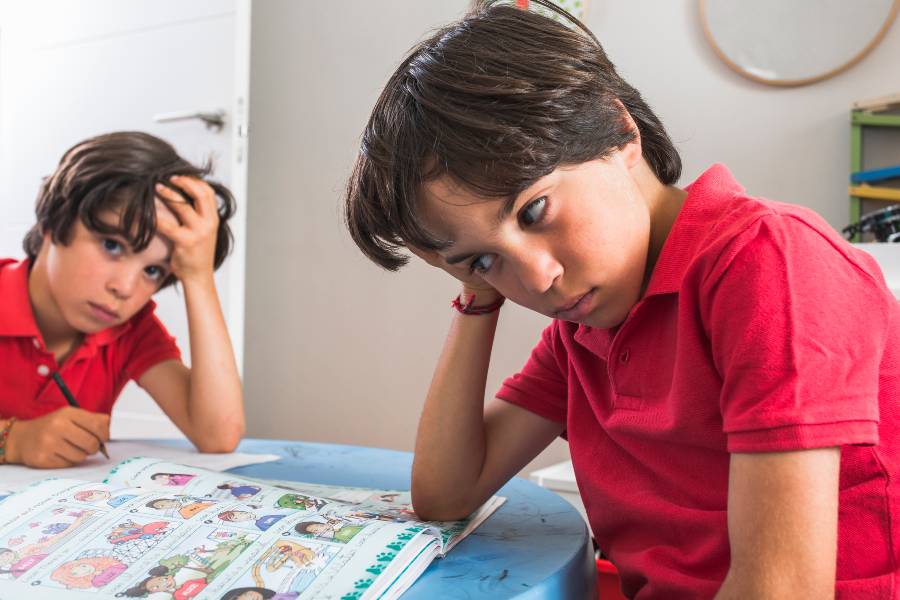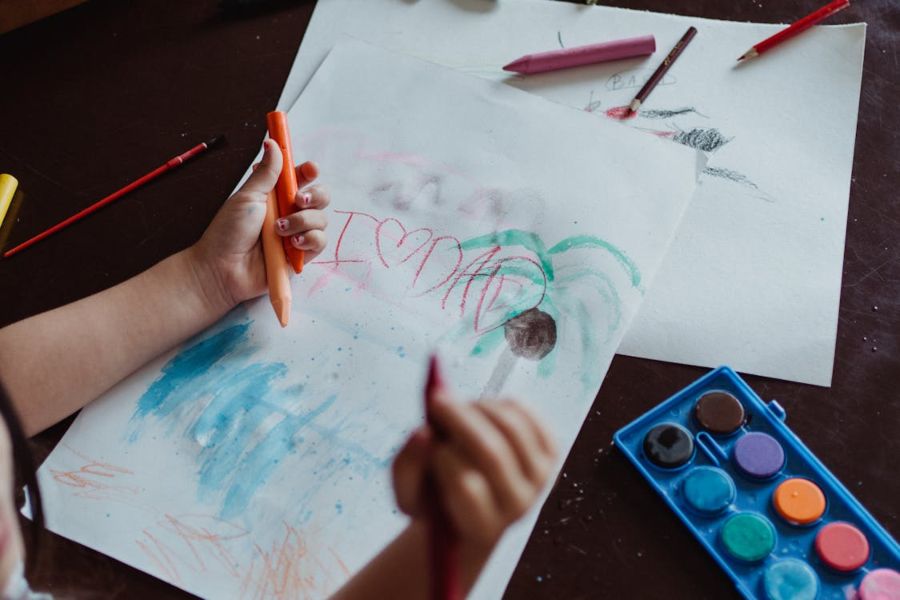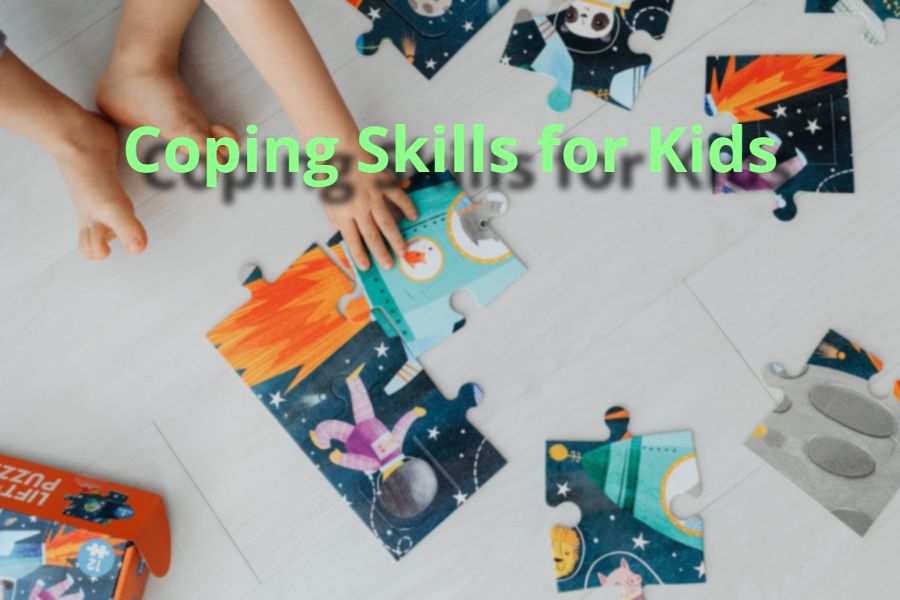Helping children learn healthy coping skills is one of the most valuable investments parents, teachers, and caregivers can make. Stress, anxiety, and overwhelming emotions are part of every child’s journey.
When kids don’t know how to handle those feelings, they may shut down, act out, or rely on unhealthy behaviors. But with guidance and practice, children can build strong coping skills that support their mental, emotional, and social growth.
This article explains what coping skills are, why they matter, and how parents and educators can teach them effectively. We will cover practical strategies, evidence-based techniques, and real-world tools that help kids thrive.
What Are Coping Skills for Kids?
Coping skills are strategies children use to manage stress, frustration, sadness, or anxiety. These skills help kids calm themselves, solve problems, and shift their focus when emotions feel too heavy. Unlike instincts, coping is learned. That means kids can develop strong skills when adults model and teach them.
Coping strategies for kids usually fall into two groups:
- Emotion-focused coping: These help children regulate feelings. Examples include deep breathing, drawing, listening to music, or reframing negative thoughts.
- Problem-focused coping: These help kids take direct action. Examples include asking for help, breaking a task into steps, or planning a solution.
Both types are important. Relying only on avoidance—like ignoring problems or withdrawing—can increase stress in the long run.
Why Coping Skills Matter
Healthy coping skills support children’s overall development. Research shows kids who learn coping strategies early are more likely to succeed in school, form healthy friendships, and manage stress as adults. A long-term study found that children with stronger coping skills had better college outcomes, more stable employment, and lower rates of substance use.

Without coping strategies, children may feel powerless when facing challenges. This can lead to anxiety, anger outbursts, or shutting down. Teaching coping skills provides tools that promote resilience and emotional intelligence.
How Kids Learn to Cope
Children learn coping through a combination of practice, modeling, and guidance. Adults play the biggest role in shaping these skills.
- Modeling: Kids watch how parents or teachers handle stress. Calm responses show them how to regulate emotions.
- Practicing during calm times: Teaching coping skills when a child is already upset rarely works. Practice during calm moments makes strategies easier to use in real situations.
- Making it fun: Games, art, or playful exercises keep kids engaged while learning new tools.
- Building routines: Daily habits, like gratitude journaling or deep breathing before bed, strengthen coping skills over time.
Categories of Coping Skills for Kids
Different children respond to different approaches. Experts group coping skills into several categories to help kids find what works best for them.
- Relaxation Skills
These skills calm the mind and body.
- Deep breathing exercises
- Progressive muscle relaxation
- Guided imagery
- Listening to calming music
- Spending time in nature
- Physical Activity
Movement helps kids release stress and reset their energy.
- Walking or biking
- Dancing
- Playing sports
- Jumping rope
- Yoga for kids
- Creative Expression
Creativity gives children safe outlets for emotions.
- Drawing or painting
- Writing in a journal
- Playing an instrument
- Singing or making up songs
- Building with blocks or crafts
- Distraction
Shifting focus helps break negative thought cycles.
- Reading a book
- Playing a puzzle or game
- Watching a short funny video
- Talking with a friend
- Helping with a household task
- Social Connection
Relationships provide support and comfort.
- Talking with parents or siblings
- Calling a friend
- Playing with pets
- Participating in group activities
- Sharing feelings with a trusted teacher
- Mindset Shifts
Cognitive strategies help children reframe challenges.
- Practicing gratitude
- Thinking of happy memories
- Positive self-talk
- Using grounding techniques
- Breaking tasks into smaller steps
Teaching Coping Skills at Different Ages
Not all strategies fit every child. Skills should be tailored to developmental stages.
Preschoolers (Ages 3–5)
- Use picture books to teach emotions.
- Practice blowing bubbles as a breathing exercise.
- Offer sensory tools like playdough or stress balls.
- Keep instructions short and simple.
Elementary School Kids (Ages 6–11)
- Encourage journaling or drawing feelings.
- Practice structured breathing (counting in and out).
- Involve them in physical games like tag or bike rides.
- Use coping cue cards with choices.
Teens (Ages 12–18)
- Teach mindfulness and meditation apps.
- Encourage music, art, or writing as outlets.
- Introduce problem-solving frameworks.
- Support peer connections and safe social outlets.
Creating a Coping Toolbox
A coping toolbox is a collection of items or strategies kids can turn to when overwhelmed. Examples include:
- A stress ball
- A journal and colored pencils
- A list of calming songs
- Photos of loved ones
- A gratitude list
- Cue cards with coping strategies
Toolboxes work best when kids help design them. They feel more invested and are more likely to use the tools.
Role of Parents and Educators
Adults are central to building coping skills. Parents can model calm behavior, validate feelings, and encourage practice. Teachers can create classrooms that support emotional regulation by providing calming corners or structured brain breaks.

Both at home and in school, adults should:
- Normalize emotions and stress.
- Praise effort, not perfection.
- Encourage problem-solving instead of avoidance.
- Provide consistent routines.
Signs Kids Need More Support
Coping skills are powerful, but sometimes kids need extra help. Warning signs include:
- Constant anxiety or sadness
- Avoiding school or friends
- Aggressive behavior
- Trouble sleeping or eating
- Withdrawal from activities they enjoy
If these signs persist, consulting a mental health professional can provide specialized support.
Practical Tips for Parents
- Practice daily: Make coping part of routines, like breathing before bed.
- Offer choices: Let kids pick which strategy to use.
- Model coping: Show kids how you calm down when stressed.
- Keep it positive: Praise kids when they use coping skills.
- Stay patient: Learning takes time. Progress may be slow but steady.
Coping Skills in Real Life
Every child’s coping journey looks different. Some may love creative expression, while others rely on sports or journaling. What matters is building a toolkit broad enough to cover different situations.
A child worried about tests may benefit from deep breathing and positive self-talk. A teen stressed about friendships may need social support and reframing skills. Flexibility is key.
The Science Behind Coping Skills
Coping skills are not just “nice-to-have.” They are grounded in brain science. When kids practice deep breathing or grounding exercises, they activate the parasympathetic nervous system, which lowers heart rate and reduces cortisol levels. This biological shift gives children space to think clearly instead of reacting impulsively.
Studies from the American Psychological Association show that children who learn stress-management techniques early report fewer physical symptoms of stress, such as headaches and stomachaches. Brain imaging research also suggests that consistent use of coping strategies strengthens neural pathways connected to self-regulation.
Cultural and Family Influences
Coping strategies look different across cultures. In some families, talking openly about emotions is encouraged. In others, resilience is taught through shared traditions, storytelling, or faith-based practices. Parents and educators should respect these cultural contexts and adapt coping approaches to fit them. For instance, a family that values spirituality might find comfort in prayer or meditation. Another might emphasize movement-based strategies such as dance or martial arts.
Acknowledging these differences ensures that coping strategies feel authentic to the child’s world. When kids see coping as part of their identity, they are more likely to use the skills consistently.
Digital Tools for Coping
Today’s children grow up surrounded by technology, which can be both a challenge and a resource. On one hand, excessive screen time may increase anxiety and reduce sleep quality. On the other, technology can provide structured coping supports:
- Mindfulness apps designed for kids offer guided breathing or visualization.
- Sleep apps provide calming sounds and bedtime routines that reduce restlessness.
- Creative platforms like digital drawing tools or music-making apps give children new ways to express emotions.
Parents should guide kids in using these resources mindfully. Digital coping tools work best when balanced with offline strategies like outdoor play and in-person social connection.
Building Coping into Schools
Schools can make coping part of everyday learning. Classrooms that integrate social-emotional learning (SEL) give students daily chances to practice. Activities like “mindful minutes,” reflection journals, or cooperative problem-solving exercises build a culture of resilience.
Some schools now include “calm corners,” quiet spaces stocked with sensory objects, books, and breathing prompts. These areas give kids permission to take short breaks and return to learning ready to engage. Research from CASEL (Collaborative for Academic, Social, and Emotional Learning) shows that SEL programs increase academic performance and reduce behavioral issues.
Long-Term Payoff
The benefits of teaching coping extend well beyond childhood. Adults who practiced coping strategies as children often show better resilience in careers, relationships, and health. They are more likely to manage conflict constructively, less likely to rely on substances for stress relief, and more equipped to handle life’s uncertainty.
In other words, teaching coping skills is not just about helping kids through today’s challenges. It is about preparing them for the complexities of adulthood.
Looking Ahead
Teaching coping skills is not about preventing stress—it is about giving kids tools to handle life’s challenges. With strong strategies, children grow into resilient, emotionally intelligent adults who can thrive in any environment.
Conclusion
Coping skills for kids are essential life tools. They help children regulate emotions, solve problems, and build resilience. Parents, teachers, and caregivers play a vital role in modeling and teaching these skills. From relaxation and movement to creative expression and social connection, kids have many ways to cope. Building a coping toolbox and practicing daily makes these strategies second nature.
Supporting children with healthy coping today sets them up for success tomorrow.

